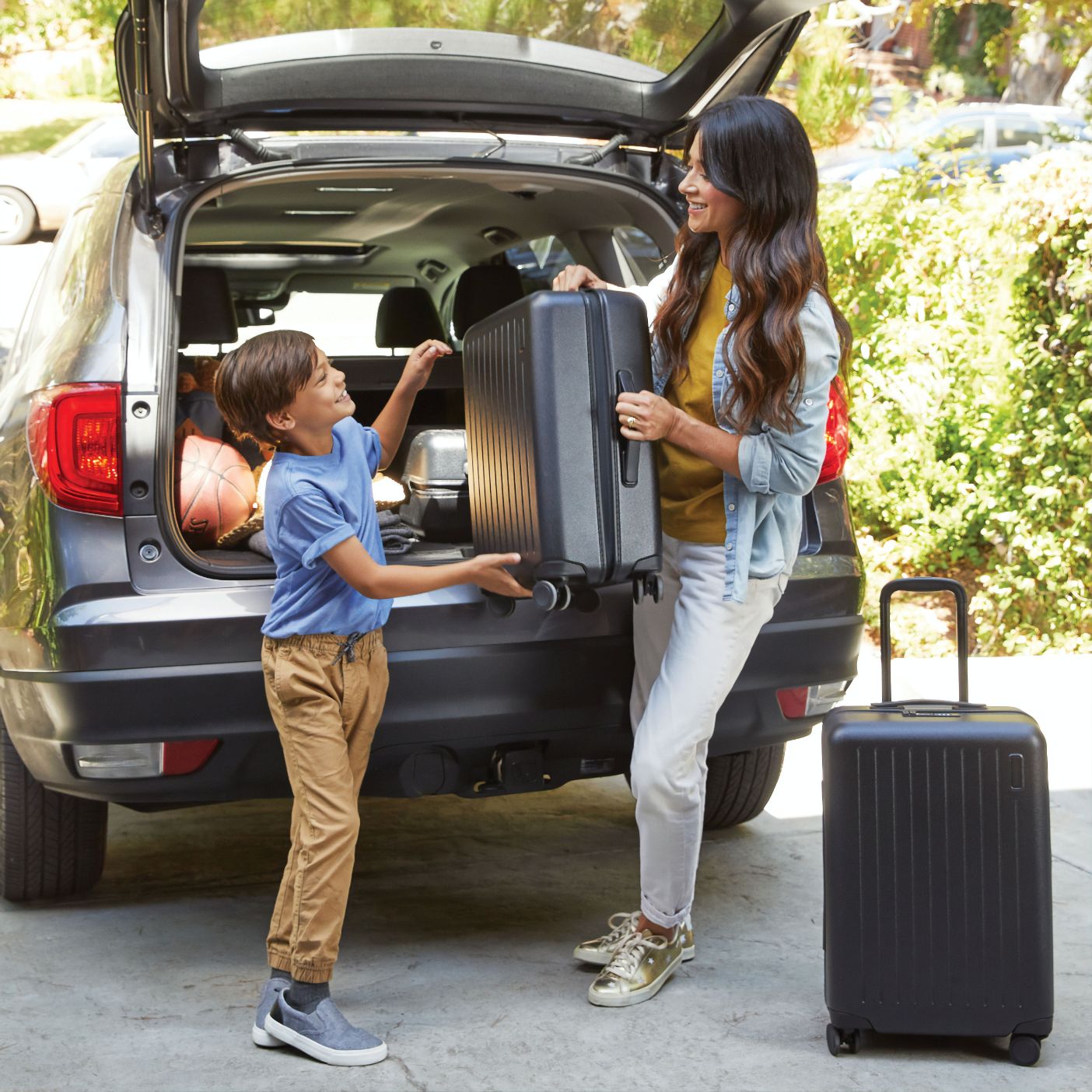Get away with the kids without flying! There are loads of options for family holidays abroad by car, train and boat - without needing to get on a plane...
If you’re concerned about your environmental impact then you may be weighing up whether - and how - to take a summer holiday with no flights. Have a read of our guide to some beautiful places you can visit in Europe and how to get there with the kids.

Let’s face it, it’s easy to worry that stopping flying – whether just for a summer, a year or longer term – means the end of exciting holidays. But giving up air travel and instead embracing a slower, more thoughtful way of travelling can lead to a whole raft of new adventures.
Sure, travelling long distance with no flying is undoubtedly more time-consuming, but at least you gain back the hours you’d otherwise spend hanging around an airport waiting for your flight or for your baggage to arrive. Which means more time to appreciate the landscapes you’re travelling through, rather than staring at clouds from 35,000ft. Start thinking about the journey itself being just as important as the destination, and the appeal of a more leisurely pace becomes ten fold.
And don't be fooled into thinking that the only way to get a cheap family holiday is to go by plane: like with flying, the earlier you book, the better the price, and you can often end up paying less than you would for a peak-period flight. Don’t forget, too, that trains (particularly on the Continent) tend to be a much more comfortable way of travelling than being crammed into an economy cabin. Bear in mind that tickets for Eurostar are available from 180 days in advance (though note that the summer Avignon service is already on sale for this year), while TGV tickets can be booked 90 days in advance; Eurotunnel and cross-channel ferries can usually be booked around 11 months in advance.
There is something undeniably romantic and exciting about overnight train travel, and it’s pretty hard to beat the Caledonian Sleeper's Highlander route, which whisks you from London (via Watford, Crewe and Preston – so don’t rule it out if you live north of the capital) to the wild, rugged scenery of the Highlands. Going to sleep as the train whizzes through the northern suburbs of London and waking to lochs and forests on the approach to Inverness is unforgettable for both grown ups and kids alike (as is starting the day by eating porridge or a bacon roll from the comfort your bunk bed). From Inverness train station you can pick up a hire car and head off to experience the dramatic far north; it’s hard to beat the seaside location of The Lighthouse Keeper’s Cottage in Ness.
If you want to go a step further and also ditch the car this summer, then combine the sleeper train with a stay at Macdonald Aviemore Resort, which is just steps away from Aviemore train station, in the heart of the Cairngorms National Park. And of course daytime trains also run to Scottish stations, which tend to be a cheaper option, and of course mean you can watch the scenery change as the journey unfolds.
If there’s one place on the Continent that we’re used to travelling to without planes, it’s France, long the stalwart of British family holidays by car and ferry. Stick to the north if you want to avoid a long drive: Le Bois Coudrais in beautiful Brittany is handily located just 40 minutes from St Malo ferry terminal. Or, if you’re hankering for the headiness of the south, consider breaking up the long drive by spending a week in rural Poitou-Charantes at La Garenne Gites before pressing on to somewhere like the idyllic Hameau de Montengrand, which overlooks the Pyrenees.
The most appealing option, in my opinion, is to head over the Channel by Eurostar and then pick up a TGV in Paris to towns and cities further afield – most major French train stations have car rental offices either within or just outside them. For example, you can reach Béziers, in the far south, in under 4½ hours, from where it’s just a 20-minute drive to the luxurious Château St Pierre de Serjac; alternatively, make use of Eurostar’s direct summer service to Avignon and then take a local TER train southwest from there. The good thing about travelling on Eurostar and French trains is that under fours go free – but bear in mind that this means that unless there’s a spare seat they’ll have to sit on an adult’s lap for the journey.
Did you know that you can get to Italy by train from the UK in just one day? This is another instance where the Eurostar and TGV combination comes in handy – if you book an early enough train to Paris, you can then grab a train to Turin or Milan that same day and be in Italy by the evening. If you’re heading further south you will need to overnight in either of these cities (never a hardship, really), before travelling onwards the next morning – for example, the sumptuous Borgo Pignano can be reached by taxi or hire car from its nearest station at Poggibonsi, which is served by trains from Florence (with connections to Milan).
It’s a long drive down to Italy from the UK’s south coast – the Channel Tunnel is one of the better options for keeping travel time down – but with a bit of planning you can tick France and Switzerland off on your list on your way as well. If you’re coming from further north than London, consider taking the ferry from either Harwich, Hull or Newcastle to the Netherlands, which will add Belgium and Luxembourg to the list of countries that you pass through – your options for interesting stopovers are almost endless.
There’s no way around it – travelling to Spain and Portugal from the UK without flying takes a long time, especially if you want to get to the balmy beaches of the south. For example, you can reach the fabulous Martinhal Beach Resort & Hotel in Portugal via the train station at nearby Lagos, but doing so means first taking the Eurostar and then four more trains across France, Spain and Portugal. That said, if you include an overnight train from the French/Spanish border it can be done in under a day and a half – not too bad when you think about the amount of ground you’re covering (and the landscapes you can soak up from your seat).
But with younger kids especially it’s probably easier to take one of the ferry routes. The quickest option is generally taking the ferry or Channel Tunnel across to France and then making the long drive down to Spain or Portugal from there, stopping overnight in France and Spain on your way. Alternatively, take the overnight ferry from Portsmouth or Plymouth to Santander in Spain. This latter option is an experience in itself, with the ferry offering more of a cruise-ship experience than you might be used to on the shorter Channel crossings – cinemas, a swimming pool, child-friendly restaurants and of course private cabins to retreat to (it is an 18 hour journey after all!). Once in Spain you’ve still got a drive of over ten hours ahead of you to get to the Algarve, or longer for Spain’s southern coast, but it’s an opportunity to stop off in sleepy provincial villages and to explore countryside that you wouldn’t otherwise see if you were travelling by air.
You can browse other places to visit in the UK and further afield on our website and be sure to let us know over on our Instagram, Twitter or Facebook pages how you get on.
